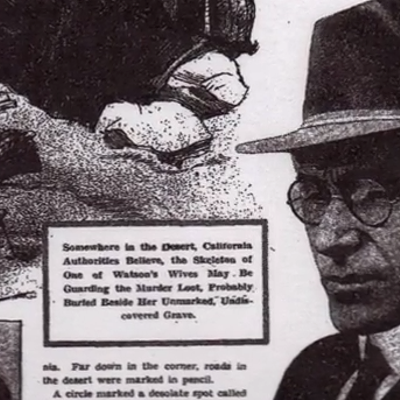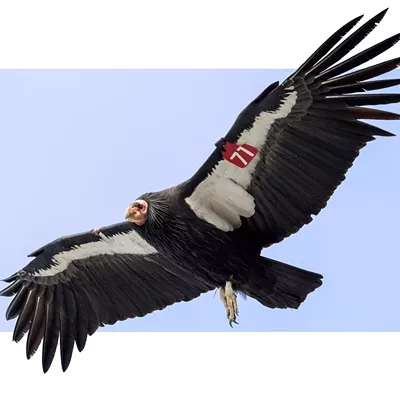At the turn of the 1860s, two painters working for the International Boundary Survey crossed the Spokane River on the ferry of a mixed-blood entrepreneur named Antoine Plante. Both rendered watercolors of the scene, but from very different perspectives; the combination of their views opens a window onto a place familiar to anyone who has ever spent time in Spokane.
James Madison Alden was a young Boston art student who, in the summer of 1860, climbed up Coyote Rocks to the location of the present Arbor Crest Winery to paint the scene. A modern visitor can trace a protruding rock column on the left of Alden's watercolor to a basalt column near the flagpole at the winery today.
In his green-and-yellow painting, Alden portrays an accurate view of a river winding east through the Spokane Valley. There is a narrow band of riparian growth along the river's shore that gives way to extensive open bunchgrass; the majority of the trees away from the water are big red-barked ponderosa pines, well spaced. Some thicker forest covers the island of basement rock bisected by Pines Road on the right side of the paintings, exactly as it looks today. The gravel shoal of the ferry landing and the point of embarkation on the river's south side can still be explored at Plante's Ferry Park and Myrtle Point, respectively. Alden sharpens up Mica Peak a bit, but his mountain curves are generally accurate, and he is especially true on the cut leading beyond Lake Coeur d'Alene to the Bitterroot Mountains in the distance.
In May 1861, British Army Lt. Charles William Wilson stood on the valley floor, facing west, to focus on the same bulge of cliffs. In his painting, the river remains invisible save for a few tall cottonwoods that rise up over the bank, and the Dishman Hills rise as purple ghosts on the left side of the watercolor. Wilson, a bird and plant enthusiast, nails the subtle colors of the spring bloom of bunchgrass and wildflowers, and he would have taken pleasure in knowing that he was painting near the last nesting place of the upland sandpiper in the state of Washington.
In his watercolor, Wilson clearly shows the slump of round basalt rocks at the bottom of the cliff that spills across the river to form the Coyote Rocks. He includes two distinct tiers of basalt, perhaps because that was what he had seen in the Snake River Country on his way up to Spokane from Walla Walla; in reality, the cliffs were formed from a single basalt flow. As in Alden's painting, Wilson shows large areas now covered with forest as being almost completely bare.
In the right foreground of Wilson's painting, a rounded, treeless hump rides down to the valley floor without any clear rock outcrops. On the other side of this hill lay Antoine Plante's house, and the cut led to a trail north to the Colville Valley and Fort Colvile, where the early furmen of the region — including Antoine Plante himself, the son of a French-Canadian trapper and an unnamed Cree woman — traveled to sell their pelts. From that journey, the hand of history unwinds to a time before writing and landscape painting, when the place served as a tribal crossing and rough territorial boundary. It is not surprising that Spokane, Coeur d'Alene, Kalispel and even Kootenai people told stories about the Coyote Rocks, because the valley marks a great change between bunchgrass country to the south and coniferous forest to the north.
People would have crossed at the site of Plante's ferry almost as far back as the Lake Missoula Floods that set the river on its cliff-hugging course around 15,000 years ago.
But these paintings also wind the clock forward into the future, beginning with the bridge that Mr. Kellogg built just upstream that put Antoine Plante out of business only a few years after Alden's and Wilson's visits. Soon after that, a strong earthquake in 1872 probably rolled more of Coyote's rocks off the cliff face. Then mines opened up to create the city of Spokane as we know it, with silver, lead and zinc from the Coeur d'Alenes providing the money for her buildings; clay from the Latah formation supplying the bricks; and limestone crushed at the Acme cement plant, right across the river, making the mortar and covering all of Coyote's Rocks with white dust that lasts until this day.
Between the world wars, tramways built by inventor Rhode Riblet helped haul those materials, and his dream home atop the rocks now anchors the Arbor Crest Winery. From its heights, a visitor can look down on an evocative statue of Antoine Plante (created by David Govedere and Keith Powell), captured in the process of hailing customers on Myrtle Point to come and ride his ferry. And the new interpretive sign in the recently refurbished park, in English, Spanish and Russian, hearkens across all this span of time, back to the mixed heritage of Plante himself. You get the feeling that the ferryman would still understand a lot of what was going on around his old home.
Thanks to Roy Breckinridge, Dale Stradling, Bob Durkee and John Alan Ross for help with the rocks and the stories.
Publication date: 09/25/03






















